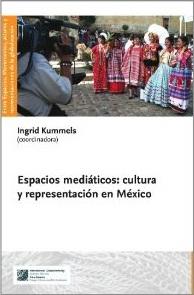Espacios mediáticos. Cultura y representación en México
Ingrid Kummels (Coor.) – 2012
In this publication of the International Research Training Group “Between Spaces. Movements, Actors and Representations of Globalisation” anthropologists, historians, curators, photographers, and filmmakers observe and investigate the medial spaces that have been part of far-reaching social and cultural processes of the twentieth and twenty-first centuries. With a broad media concept as its point of departure, the focus is placed on the production, spread, and interpretation of these spaces. The themes treated in this volume center on the auditory and visual culture in post-revolutionary schools and intercity buses; on portrait photos in which women from the elite class wear indigenous Tehuana clothing; on exotic wrestling in Tijuana; on the production of films involving the collaboration of both indigenous and nonindigenous directors. Who is able to express oneself through these productions? How do the protagonists of these productions position themselves within the area of tension between the “ethnic groups,” the “region” and the “state” in Mexico and beyond its borders? How do the actors create “between spaces” by means of medial representations that make it possible for them to position themselves outside of oversimplified dichotomies and rigid hierarchies? How did the available categories of power and difference alter categories of gender, ethnicity, and nation? And do such spaces produce new cultural and social relations? These questions form the basis for identifying new spaces that have been created by the actors through the use of media in the historical and contemporary phases of globalization.





